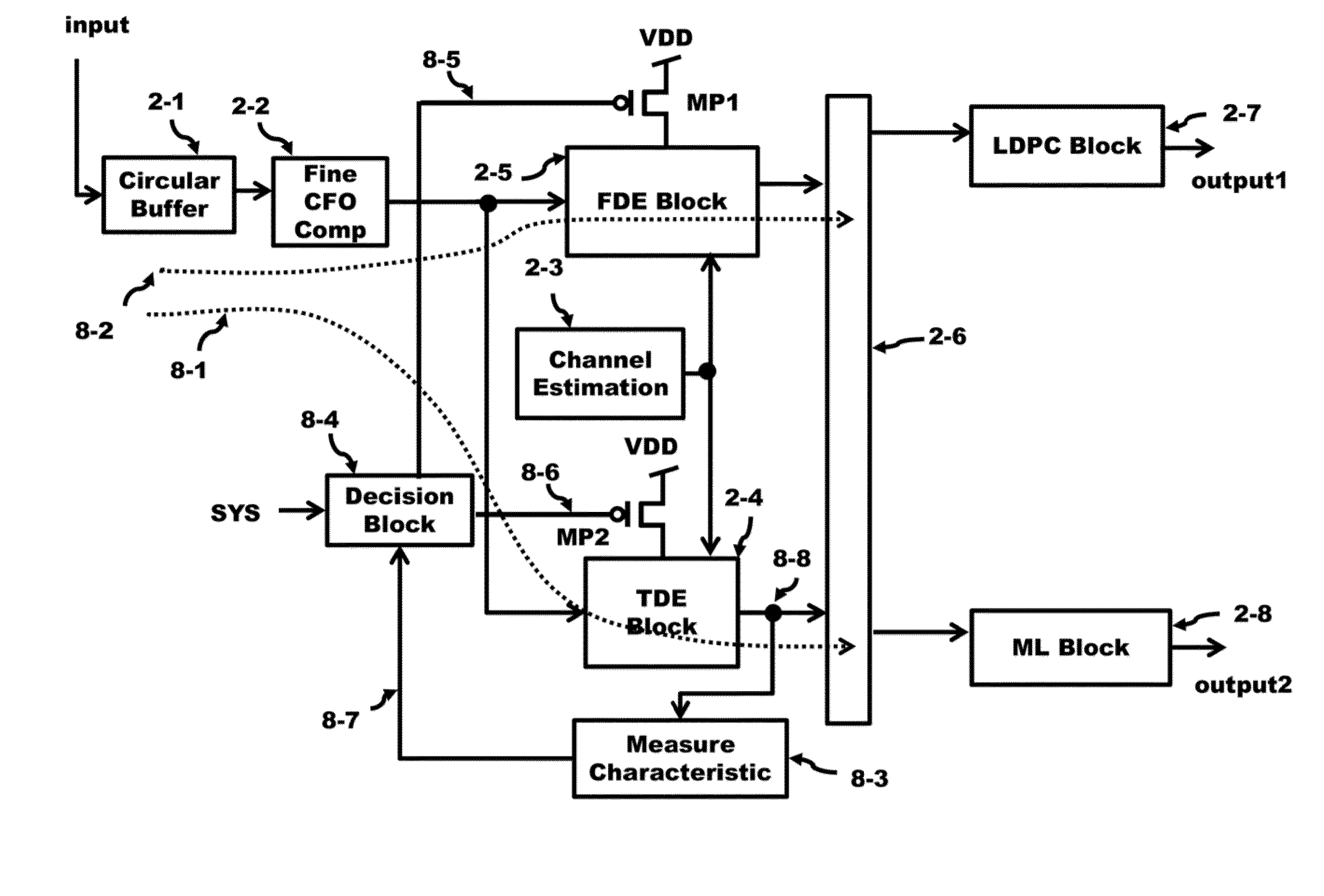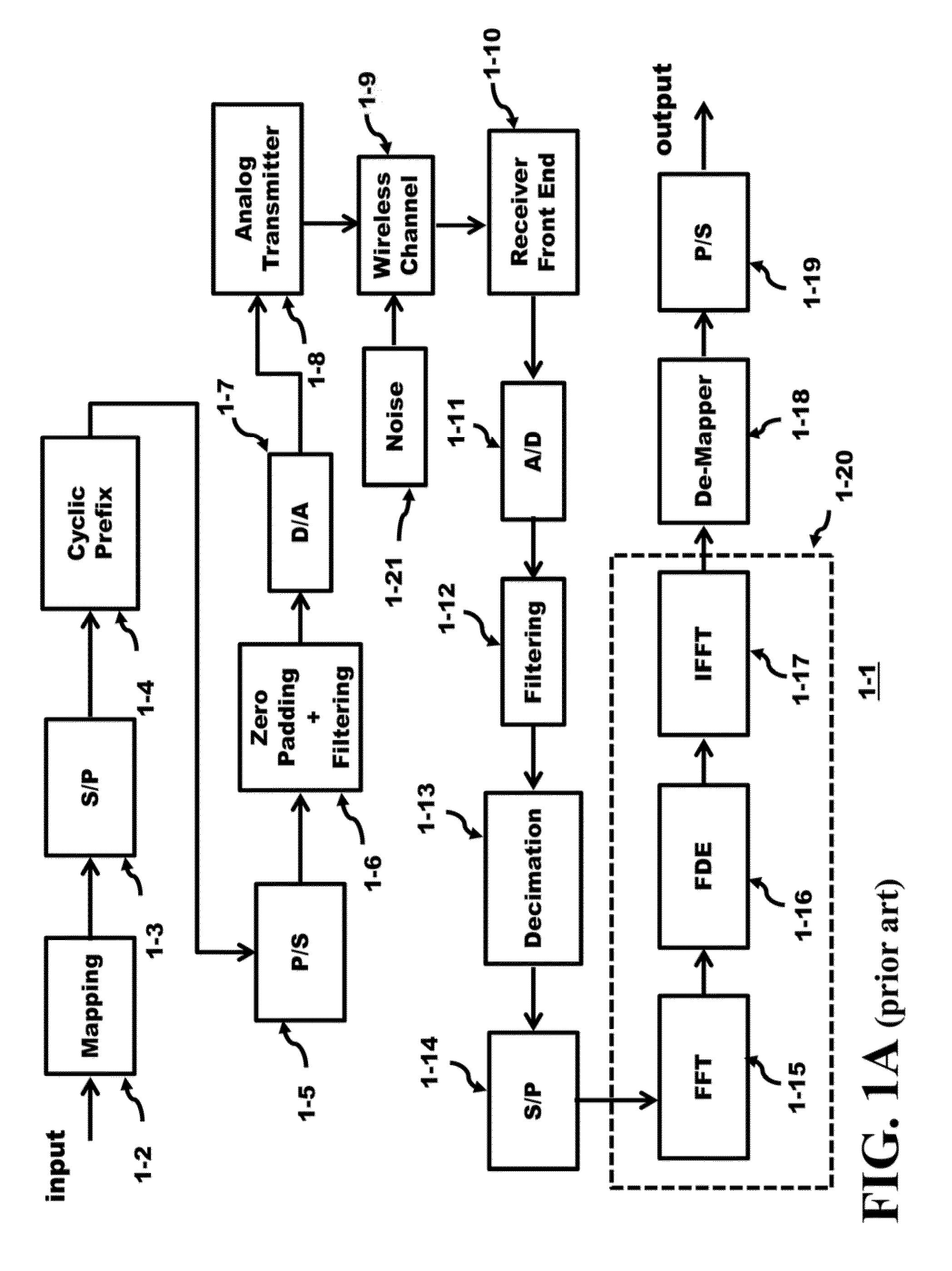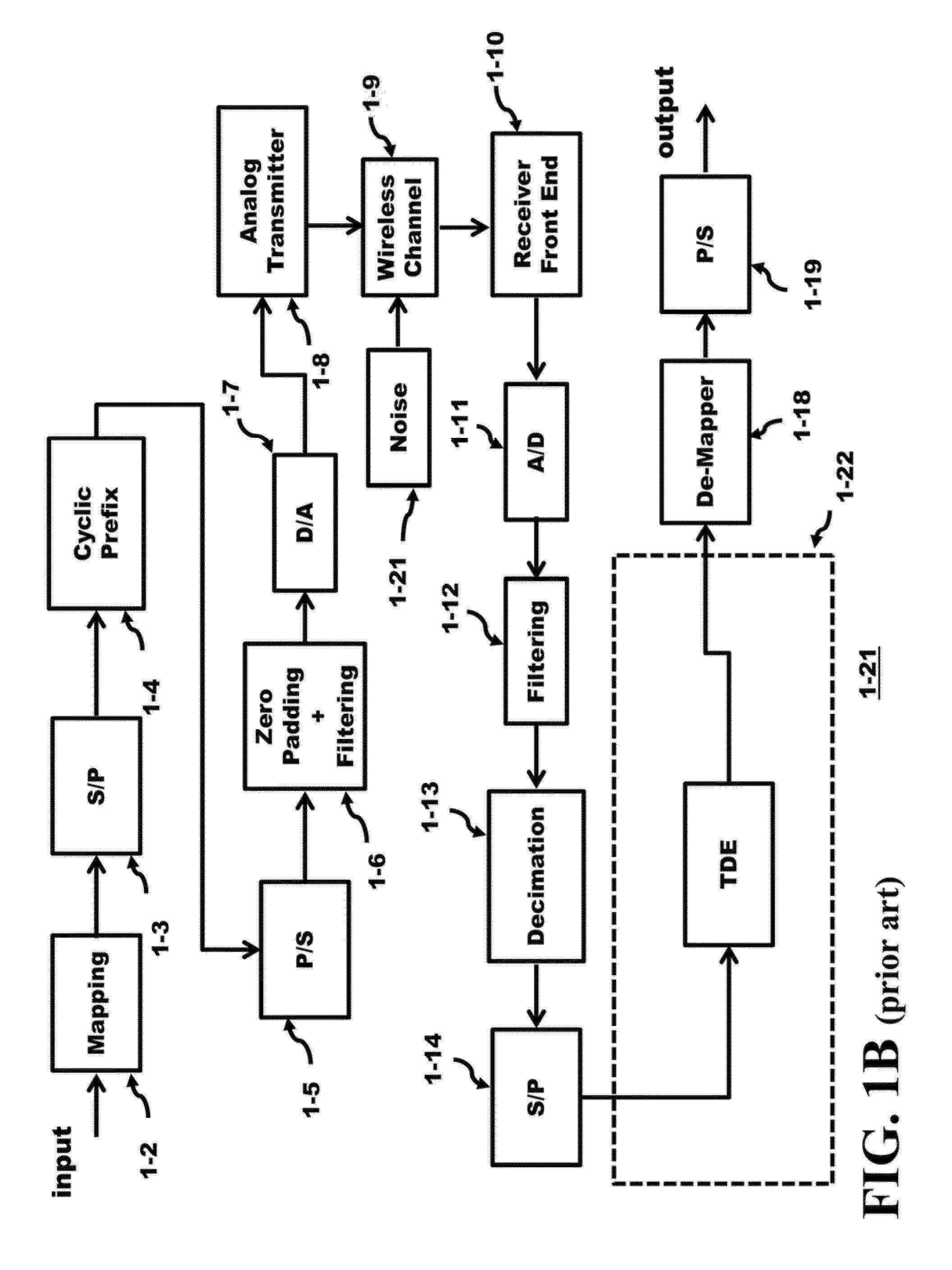Method and apparatus of an architecture to switch equalization based on signal delay spread
a signal delay and equalization technology, applied in the field of method and apparatus of an architecture to switch equalization based on signal delay spread, can solve problems such as frequency offsets, and achieve the effects of reducing the power dissipation of the system, and reducing the complexity of performing matrix inversion
- Summary
- Abstract
- Description
- Claims
- Application Information
AI Technical Summary
Benefits of technology
Problems solved by technology
Method used
Image
Examples
Embodiment Construction
[0029]The WiGig standard transmits signals at 60 GHz allowing nearly a 10 GHz signal bandwidth capability. A desirable feature is to use directional (unidirectional) antennas at the transmitter to focus the energy to a receiver at a given location. Such a system offers flexibility in use. For example, if the distance between the transmitter and receiver to be either increased, the signal energy of unidirectional antenna allows for an improved Bit Error Rate Test (BERT) when compared to a omnidirectional antenna that is transmitting the same power levels. If the distance between the transmitter and receiver is decreased, then the signal quality improves when compared to an omnidirectional antenna that is transmitting the same power levels.
[0030]The directional antennas also offer an additional benefit for 60 GHz transport. Since the spreading of the signal energy is reduced from a directional antenna, reflected signals from structures off the signal path are reduced. A signal with a ...
PUM
 Login to View More
Login to View More Abstract
Description
Claims
Application Information
 Login to View More
Login to View More - R&D
- Intellectual Property
- Life Sciences
- Materials
- Tech Scout
- Unparalleled Data Quality
- Higher Quality Content
- 60% Fewer Hallucinations
Browse by: Latest US Patents, China's latest patents, Technical Efficacy Thesaurus, Application Domain, Technology Topic, Popular Technical Reports.
© 2025 PatSnap. All rights reserved.Legal|Privacy policy|Modern Slavery Act Transparency Statement|Sitemap|About US| Contact US: help@patsnap.com



